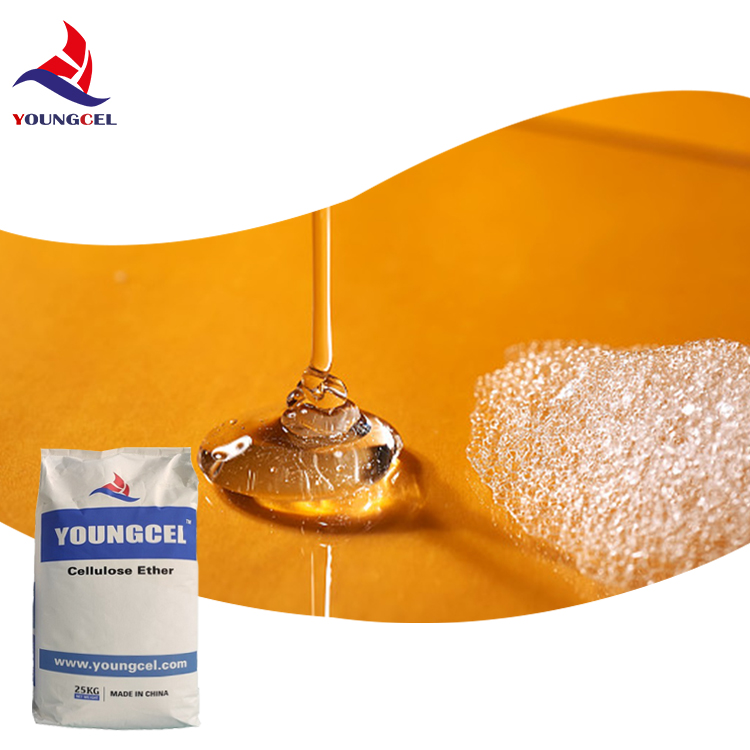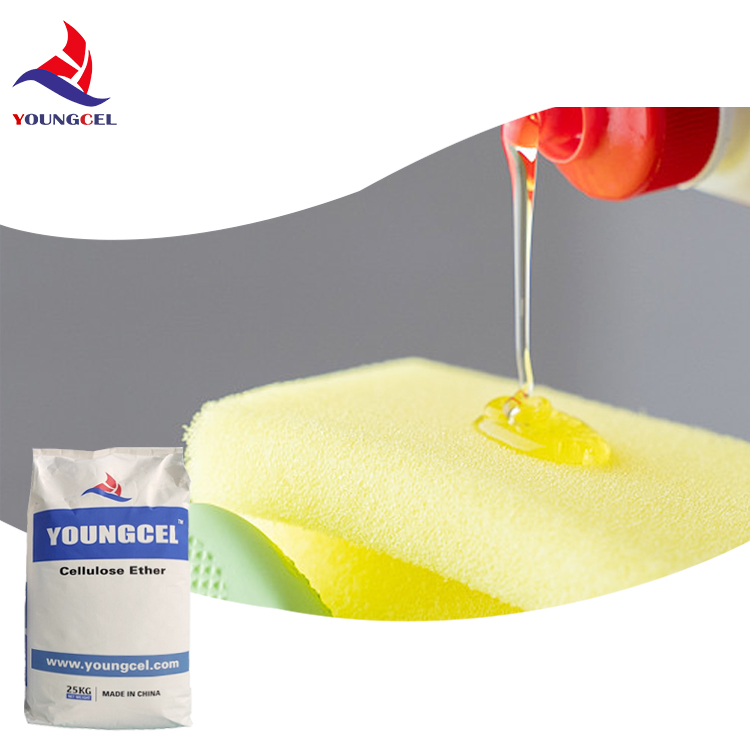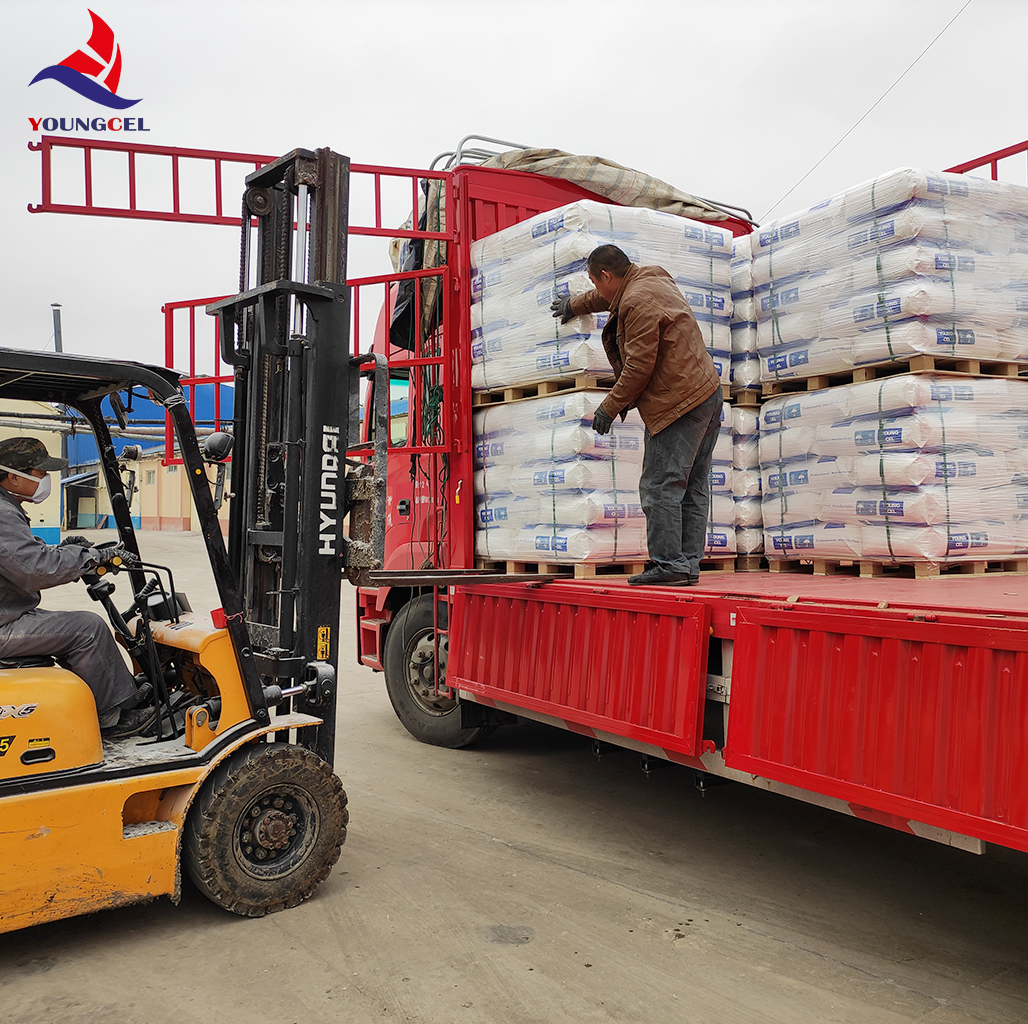Understanding High Viscosity HPMC in Liquid Detergents
In the highly competitive market of liquid detergents, formulators consistently seek additives that can enhance product performance, stability, and consumer appeal. One such critical additive is Hydroxypropyl Methyl Cellulose (HPMC), particularly its high viscosity grades. As a leading Top selling high viscosity liquid detergents additive HPMC powder manufacturer Hydroxypropyl Methyl Cellulose, we understand the nuanced requirements of the industry. HPMC, a versatile cellulose ether, plays a pivotal role in dictating the rheological properties of liquid formulations, offering superior thickening, stabilization, and film-forming capabilities. Its non-ionic nature and excellent compatibility with various surfactants and polymers make it an ideal choice for a wide spectrum of detergent products, from household cleaners to industrial degreasers.
The demand for high-performance, eco-friendly, and cost-effective detergent formulations is driving innovation. Manufacturers are increasingly focusing on additives that can provide multi-functional benefits, reducing the complexity of formulations while improving end-product quality. High viscosity HPMC meets these criteria by delivering enhanced viscosity control, improved suspension of insoluble particles, and superior foam stability, contributing significantly to the perceived quality and efficacy of liquid detergents. This segment explores the fundamental aspects and market relevance of HPMC as a crucial additive.

Industry Trends and Market Dynamics
The global detergents market is characterized by a continuous drive towards concentrated formulas, sustainable ingredients, and enhanced sensory attributes. Consumers demand products that offer superior cleaning performance while being gentle on the environment and skin. This has led to a surge in demand for bio-based and biodegradable additives. Top selling high viscosity liquid detergents additive HPMC powder manufacturer Hydroxypropyl Methyl Cellulose addresses these trends by being derived from natural cellulose, offering excellent biodegradability and low toxicity.
- Sustainability Focus: Increased preference for plant-derived and environmentally friendly additives to meet stringent regulatory standards and consumer expectations for "green" products.
- Concentrated Formulas: HPMC's thickening efficiency allows for the creation of highly concentrated liquid detergents, reducing packaging waste and transportation costs.
- Multi-functional Additives: Demand for ingredients that can offer multiple benefits, such as thickening, stabilizing, and emulsifying, to simplify formulations and reduce raw material inventory.
- Performance Enhancement: Continuous innovation in detergent chemistry requires additives that maintain performance across various water hardness levels and temperatures.
Geographically, the Asia-Pacific region is witnessing rapid growth in the detergents market, driven by urbanization and rising disposable incomes. This growth, coupled with evolving consumer preferences in developed markets for specialty and premium products, underscores the importance of high-quality additives like HPMC in formulation development.

Manufacturing Process Flow of HPMC
The production of high-quality Hydroxypropyl Methyl Cellulose involves a meticulously controlled chemical synthesis from natural cellulose. As a dedicated Top selling high viscosity liquid detergents additive HPMC powder manufacturer Hydroxypropyl Methyl Cellulose, our process ensures consistency and purity, meeting stringent industry standards.
Detailed Process Steps:
-
Cellulose Procurement and Pre-treatment:
High-purity wood pulp or cotton linter, rich in alpha-cellulose, is sourced. This cellulose is typically depolymerized to achieve a desired molecular weight range, often through controlled oxidation or hydrolysis, to optimize its reactivity for subsequent etherification. This initial step is critical for controlling the final viscosity of the HPMC.
-
Alkalization:
The pre-treated cellulose is steeped in a concentrated caustic soda (NaOH) solution. This process, known as alkalization or mercerization, swells the cellulose fibers, disrupting the crystalline structure and converting cellulose into alkali cellulose. This increases the accessibility of hydroxyl groups, making them more reactive for etherification.
-
Etherification:
The alkali cellulose is then reacted with methyl chloride (CH₃Cl) and propylene oxide (CH₂OCHCH₃) in a pressurized reactor under carefully controlled temperature and pressure conditions. Methyl groups (-OCH₃) and hydroxypropyl groups (-OCH₂CH(OH)CH₃) are introduced onto the cellulose backbone, replacing some of the hydroxyl groups. The ratio of methyl chloride to propylene oxide and reaction conditions precisely determine the Degree of Substitution (DS) and Molar Substitution (MS) of methyl and hydroxypropyl groups, respectively, which are critical for water solubility, gelation temperature, and viscosity.
-
Neutralization:
After etherification, the reaction mixture is neutralized with an acid (e.g., acetic acid) to adjust the pH, remove excess alkali, and terminate further reactions.
-
Washing and Purification:
The crude HPMC is extensively washed with hot water to remove salts (e.g., NaCl) and unreacted byproducts, ensuring a high level of purity. This step is crucial for achieving low ash content and excellent clarity in the final product solution.
-
Drying:
The purified HPMC is then dried using flash dryers or rotary dryers to reduce moisture content to the specified level, typically below 5%. Controlled drying prevents degradation and ensures product stability.
-
Grinding and Sieving:
The dried HPMC is ground into a fine powder and sieved to achieve the desired particle size distribution. Particle size is crucial for dissolution rate and workability in various applications. Different mesh sizes are available to suit specific formulation requirements.
-
Quality Control and Packaging:
Throughout the process, rigorous quality control checks are performed, adhering to ISO 9001 and ANSI standards. Final products are tested for viscosity, moisture, ash content, gel temperature, and particle size before being packaged in multi-ply paper bags with an inner polyethylene liner, typically in 25 kg units, to prevent moisture absorption and ensure a long shelf life.
This meticulous process ensures that our Top selling high viscosity liquid detergents additive HPMC powder manufacturer Hydroxypropyl Methyl Cellulose consistently delivers exceptional performance in thickening, stability, and film formation, making it ideal for a diverse range of applications, including but not limited to liquid detergents, personal care products, and construction materials.

Technical Specifications and Parameters
The performance of HPMC in liquid detergents is directly correlated with its specific technical parameters. Understanding these specifications is crucial for formulators to select the appropriate grade. Our Top selling high viscosity liquid detergents additive HPMC powder manufacturer Hydroxypropyl Methyl Cellulose offers a range of grades tailored to diverse rheological requirements.
Typical Product Specifications (High Viscosity Grades):
| Parameter | Unit | Value/Range | Test Method |
|---|---|---|---|
| Viscosity (2% Solution, 20°C) | mPa.s | 75,000 - 100,000+ | Brookfield RVT, Spindle 6, 20rpm |
| Methoxy Content | % | 27.0 - 30.0 | USP/EP |
| Hydroxypropoxy Content | % | 4.0 - 7.5 | USP/EP |
| Moisture Content | % | ≤ 5.0 | Loss on Drying (105°C, 3h) |
| Ash Content (Sulfate) | % | ≤ 1.5 | USP/EP |
| pH (1% Solution) | - | 5.0 - 8.0 | pH Meter |
| Particle Size | % passing 80 mesh | ≥ 98 | Sieve Analysis |
| Gelation Temperature | °C | 60 - 90 | USP/EP |
The viscosity value is paramount, indicating the thickening power. Higher viscosity grades are preferred for highly concentrated detergents or applications requiring robust rheology control. Methoxy and Hydroxypropoxy content define the degree of substitution and molar substitution, respectively, directly impacting solubility, gelation temperature, and compatibility. Gelation temperature is a critical parameter, especially for formulations exposed to varying temperatures, as it indicates the point at which the solution transitions from a liquid to a gel, affecting product stability.

Application Scenarios and Technical Advantages
The versatility of high viscosity HPMC makes it indispensable across various liquid detergent applications. Its unique properties confer significant technical advantages to the final product.
Typical Application Scenarios:
- Liquid Laundry Detergents: Provides excellent thickening for concentrated formulas, aids in suspending solid particles (e.g., optical brighteners, encapsulated fragrances), and enhances stability against phase separation.
- Dishwashing Liquids: Contributes to desirable viscosity, improving the "feel" and dispensing characteristics, while also providing foam stabilization and emulsification for grease removal.
- Surface Cleaners (e.g., Bathroom, Kitchen Cleaners): Ensures the product adheres well to vertical surfaces, extending contact time for better cleaning efficacy. Prevents dripping and provides thixotropic properties.
- Automotive Care Products: Used in car wash soaps and waxes for viscosity modification and stable suspension of abrasive or protective particles.
- Industrial & Institutional (I&I) Cleaners: Essential for heavy-duty degreasers and sanitizers where robust rheology and stability under harsh chemical conditions are required.
Technical Advantages:
- Exceptional Thickening Efficiency: Achieves desired viscosity at low use concentrations, leading to cost-effective formulations.
- Pseudoplastic Rheology (Shear Thinning): Provides high viscosity at rest for stability, but thins under shear (e.g., pouring or spraying), allowing for easy application and excellent spreadability.
- Excellent Suspension and Emulsification: Prevents settling of insoluble solids and stabilizes emulsions, crucial for multi-phase detergent products.
- pH and Temperature Stability: Maintains performance across a broad range of pH levels typical for detergents and exhibits good stability against temperature fluctuations.
- Film-Forming Properties: Can leave a protective, non-tacky film, enhancing shine and preventing re-deposition in some applications.
- Non-Ionic Nature: Compatible with a wide array of ionic and non-ionic surfactants, polymers, and other additives commonly used in detergent formulations, reducing compatibility issues.
- Biodegradability and Eco-friendliness: Derived from natural cellulose, aligning with sustainable product development goals.
These advantages position Top selling high viscosity liquid detergents additive HPMC powder manufacturer Hydroxypropyl Methyl Cellulose as a superior choice for enhancing the quality, functionality, and market appeal of liquid detergents. Its contribution to product aesthetics, performance, and stability directly translates to greater consumer satisfaction and brand loyalty.
Vendor Comparison and Customized Solutions
Choosing the right HPMC supplier is as critical as selecting the right HPMC grade. Manufacturers often face challenges in consistency, technical support, and the ability to customize products for niche applications. As a prominent Top selling high viscosity liquid detergents additive HPMC powder manufacturer Hydroxypropyl Methyl Cellulose, we distinguish ourselves through a commitment to quality, innovation, and client-centric solutions.
Key Differentiators in Vendor Comparison:
| Feature | Leading Manufacturer (e.g., Youngcel) | Typical Competitor |
|---|---|---|
| Product Consistency | Exceptional, batch-to-batch consistency guaranteed via ISO 9001 and internal QC protocols. | Variable, may require extensive in-house testing by client. |
| Technical Support | Dedicated team of polymer chemists, formulation guidance, troubleshooting. | Basic product data sheets, limited in-depth support. |
| Customization Capability | Flexible production for tailored viscosity, substitution levels, dissolution profiles. | Standard product grades only, limited flexibility. |
| Certifications & Compliance | ISO, REACH, FDA (where applicable), Halal, Kosher. Comprehensive documentation. | May only meet minimum regional standards, limited global certifications. |
| Lead Time & Reliability | Consistent lead times (2-4 weeks), robust supply chain, global distribution network. | Often unpredictable, potential for supply disruptions. |

Customized Solutions:
Recognizing that off-the-shelf solutions may not always perfectly align with unique formulation challenges, we offer bespoke HPMC solutions. Our R&D team works closely with clients to develop tailor-made HPMC grades by adjusting:
- Viscosity Range: Fine-tuning the molecular weight to achieve specific flow characteristics.
- Degree of Substitution (DS) and Molar Substitution (MS): Modifying the ratio of methyl and hydroxypropyl groups to influence solubility, surface activity, and gelation behavior.
- Particle Size Distribution: Producing specific particle sizes for optimized dissolution rates in various processing conditions.
- Surface Treatment: Offering modified HPMC grades for delayed hydration or enhanced dispersibility, critical for certain applications.
This collaborative approach ensures that our clients receive a product perfectly optimized for their specific application, enhancing performance and operational efficiency.
Application Case Studies
Real-world application demonstrates the tangible benefits of incorporating high viscosity HPMC into liquid detergent formulations.
Case Study 1: Enhanced Stability in Concentrated Laundry Detergent
A major household care brand approached us seeking to develop a super-concentrated liquid laundry detergent formula. The challenge was to maintain a stable, homogeneous solution without phase separation of active ingredients (enzymes, brighteners) over a prolonged shelf life, especially under varying temperature conditions. Standard thickening agents proved insufficient, leading to sedimentation and an unappealing product appearance.
Solution: We recommended a specific high viscosity grade of Top selling high viscosity liquid detergents additive HPMC powder manufacturer Hydroxypropyl Methyl Cellulose (viscosity: 90,000 mPa.s) at a concentration of 0.8% w/w.
Results: The inclusion of our HPMC significantly improved the rheological profile, achieving a stable, non-settling formulation. Accelerated aging tests showed no phase separation or sedimentation after 6 months at 40°C, a marked improvement over previous formulations. The pseudoplastic behavior ensured easy pouring while maintaining high viscosity at rest, enhancing consumer perception of product quality.
Case Study 2: Optimized Adhesion for Vertical Surface Cleaner
An industrial cleaner manufacturer required an additive for a new bathroom descaler that would cling effectively to vertical ceramic and tiled surfaces, maximizing contact time for limescale removal without excessive dripping. Existing formulations using acrylic thickeners resulted in either too low viscosity or undesirable stickiness.
Solution: Our technical team proposed a specialized HPMC grade with optimized thixotropic properties and a viscosity range of 80,000 mPa.s, specifically designed for spray and cling applications.
Results: The modified HPMC solution provided superior cling performance, drastically reducing run-off and extending the active ingredient contact time on vertical surfaces by over 30%. This not only improved cleaning efficiency but also reduced product waste and user effort, leading to positive customer feedback and increased market share for the client's new product line.

Frequently Asked Questions (FAQ)
- Q: What is the recommended storage condition for HPMC powder?
- A: HPMC powder should be stored in its original, unopened packaging in a cool, dry place, away from direct sunlight and moisture. Ideal conditions are typically below 30°C and 70% relative humidity. Proper storage ensures a shelf life of at least 24 months.
- Q: How does HPMC affect foam in liquid detergents?
- A: While HPMC is not primarily a foaming agent, it can act as a foam stabilizer, particularly in systems with high surfactant concentrations. By increasing the viscosity of the aqueous phase, it can slow down the drainage of liquid from the foam lamellae, thereby enhancing foam stability and longevity, which is desirable in many detergent applications.
- Q: Is HPMC compatible with anionic and non-ionic surfactants?
- A: Yes, HPMC is a non-ionic polymer and is highly compatible with a wide range of surfactants, including anionic, non-ionic, and amphoteric types, without significant interaction or precipitation issues. This broad compatibility makes it an ideal thickener for complex detergent formulations.
- Q: What are the typical lead times for orders?
- A: Standard lead times for our Top selling high viscosity liquid detergents additive HPMC powder manufacturer Hydroxypropyl Methyl Cellulose products typically range from 2 to 4 weeks, depending on order volume and specific grade requirements. We maintain strategic inventory levels and have efficient production scheduling to meet urgent demands whenever possible. For custom orders, lead times will be confirmed upon specification finalization.
- Q: What warranty and after-sales support do you offer?
- A: We stand behind the quality of our products with a comprehensive warranty against manufacturing defects for a period of 12 months from the date of shipment, provided proper storage conditions are maintained. Our dedicated after-sales support team provides extensive technical assistance, including formulation guidance, troubleshooting, and application advice, ensuring optimal product integration and performance. We are committed to fostering long-term partnerships through unparalleled service.
Authoritative References
- Smith, J. A. (2022). "Rheology Modifiers in Detergent Formulations: A Review of Cellulose Ethers." Journal of Surfactants and Detergents, 25(3), 321-335.
- European Chemicals Agency (ECHA). (2023). Registration, Evaluation, Authorisation and Restriction of Chemicals (REACH) Information on Hydroxypropyl Methylcellulose. Retrieved from [ECHA database, specific registration dossiers].
- U.S. Pharmacopeial Convention (USP). (2021). USP Monographs: Hypromellose.
- Gupta, R., & Sharma, S. (2020). "Impact of Hydroxypropyl Methylcellulose on the Stability and Performance of Liquid Cleaning Products." International Journal of Polymer Science, Article ID 8765432.
-
Understanding Methyl 2 Hydroxyethyl Cellulose: Uses, Benefits & Industry InsightsNewsNov.24,2025
-
Hydroxyethyl Methyl Cellulose HEMC: Industrial Uses, Benefits & Future TrendsNewsNov.23,2025
-
HEMC Cellulose: Versatile & Sustainable Industrial Polymer | YoungcelNewsNov.23,2025
-
Methyl Hydroxyethyl Cellulose: Versatile Building Block for Industry & SustainabilityNewsNov.23,2025
-
CAS 9032 42 2: Understanding Polyvinyl Alcohol's Impact on Industry & SustainabilityNewsNov.22,2025
-
Hydroxyethyl Methyl Cellulose: Versatile Solutions for Modern Industry and SustainabilityNewsNov.22,2025




